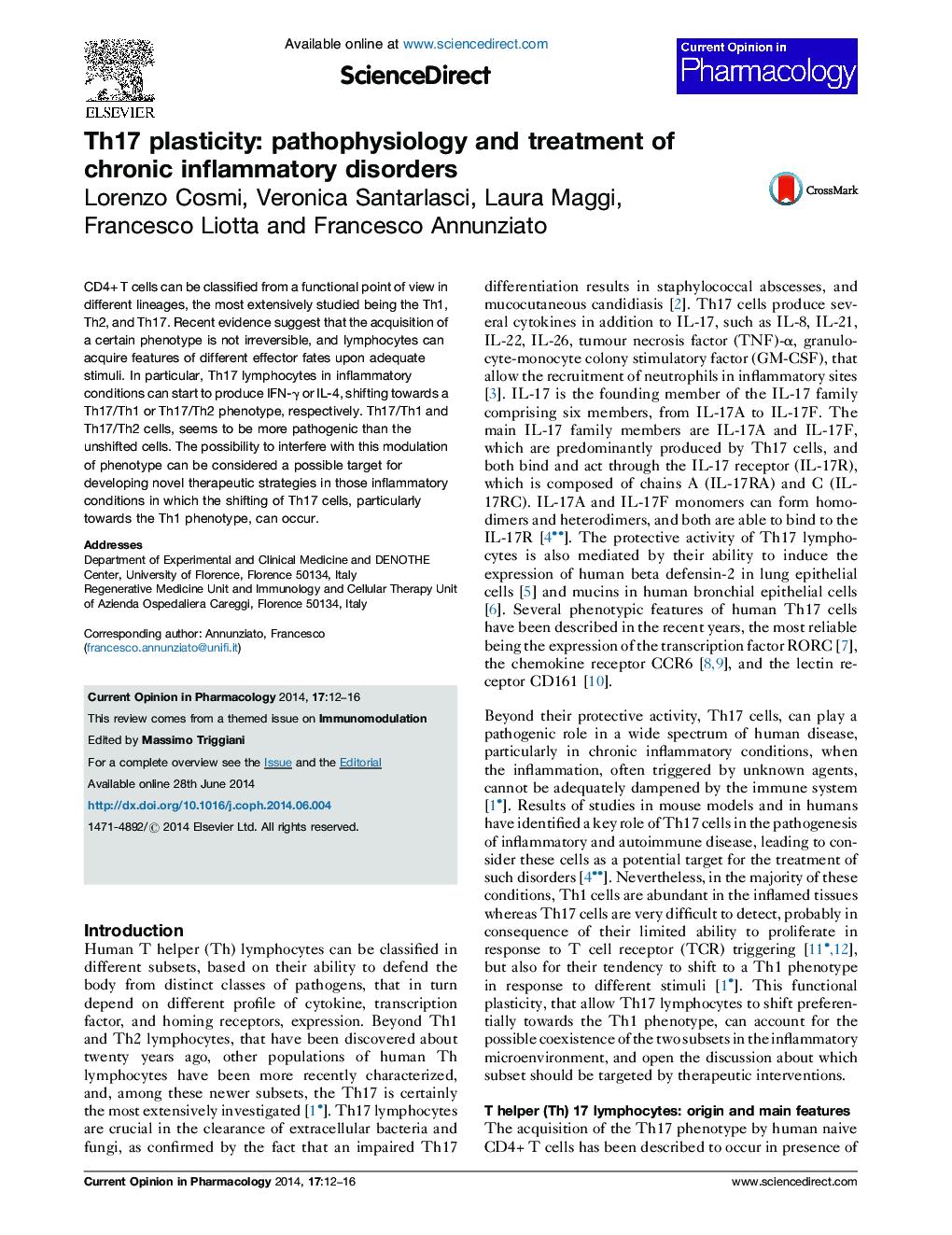| Article ID | Journal | Published Year | Pages | File Type |
|---|---|---|---|---|
| 2529887 | Current Opinion in Pharmacology | 2014 | 5 Pages |
•Th17 cells, can shift towards a Th1 or Th2 phenotype, in inflammatory conditions.•Th17/Th1 and Th17/Th2 are more pathogenic than the unshifted lymphocytes.•Inhibition of Th17 shifting can be considered a therapeutic tool in inflammation.
CD4+ T cells can be classified from a functional point of view in different lineages, the most extensively studied being the Th1, Th2, and Th17. Recent evidence suggest that the acquisition of a certain phenotype is not irreversible, and lymphocytes can acquire features of different effector fates upon adequate stimuli. In particular, Th17 lymphocytes in inflammatory conditions can start to produce IFN-γ or IL-4, shifting towards a Th17/Th1 or Th17/Th2 phenotype, respectively. Th17/Th1 and Th17/Th2 cells, seems to be more pathogenic than the unshifted cells. The possibility to interfere with this modulation of phenotype can be considered a possible target for developing novel therapeutic strategies in those inflammatory conditions in which the shifting of Th17 cells, particularly towards the Th1 phenotype, can occur.
